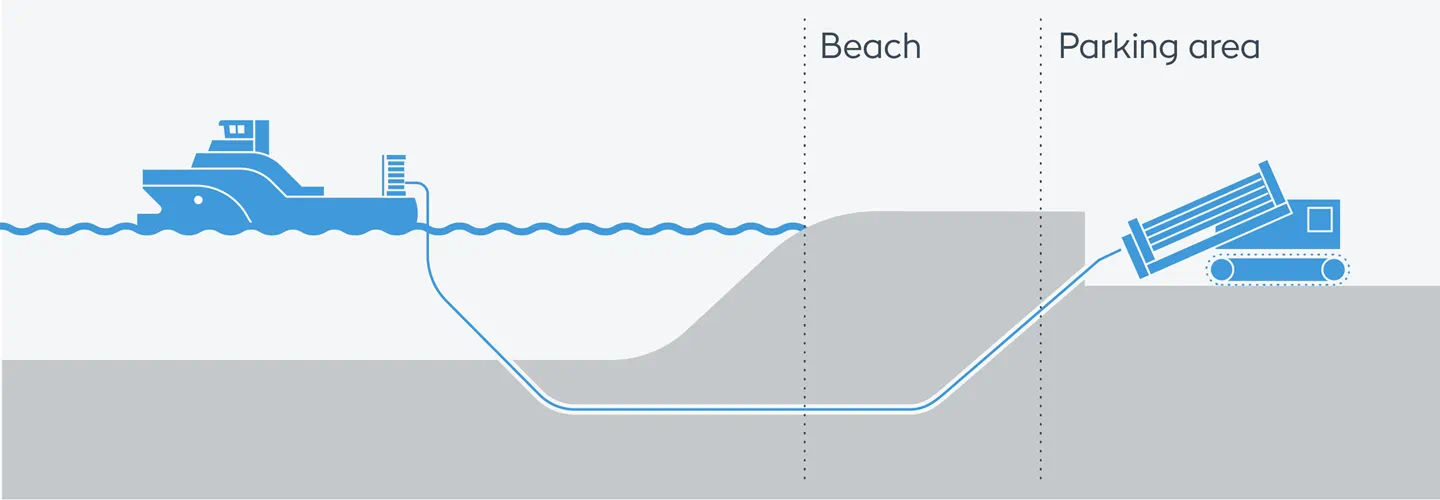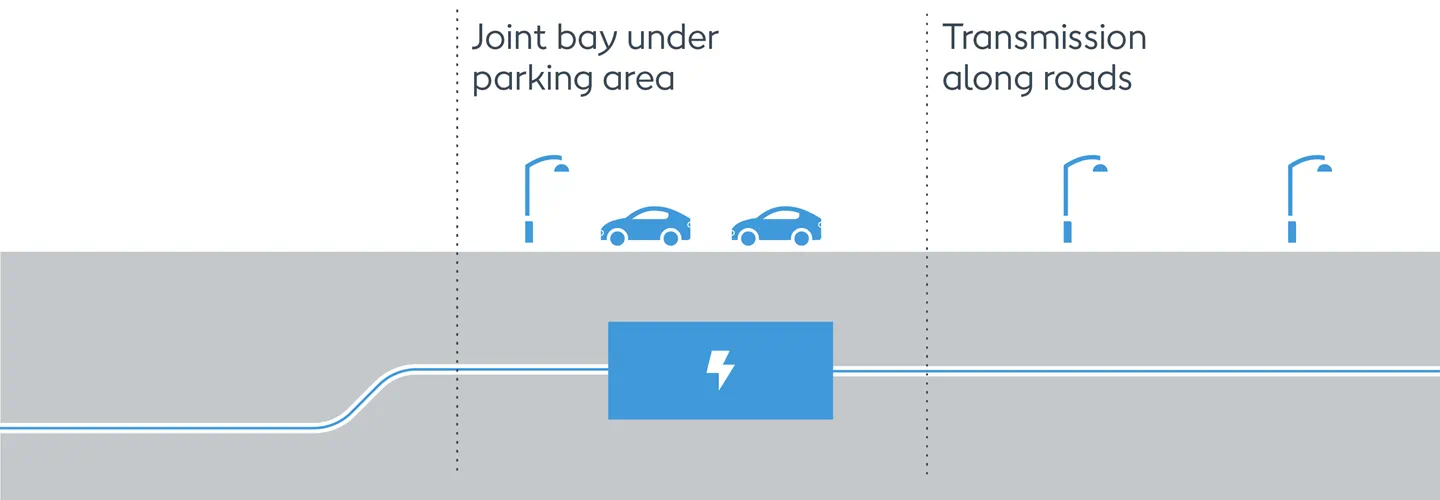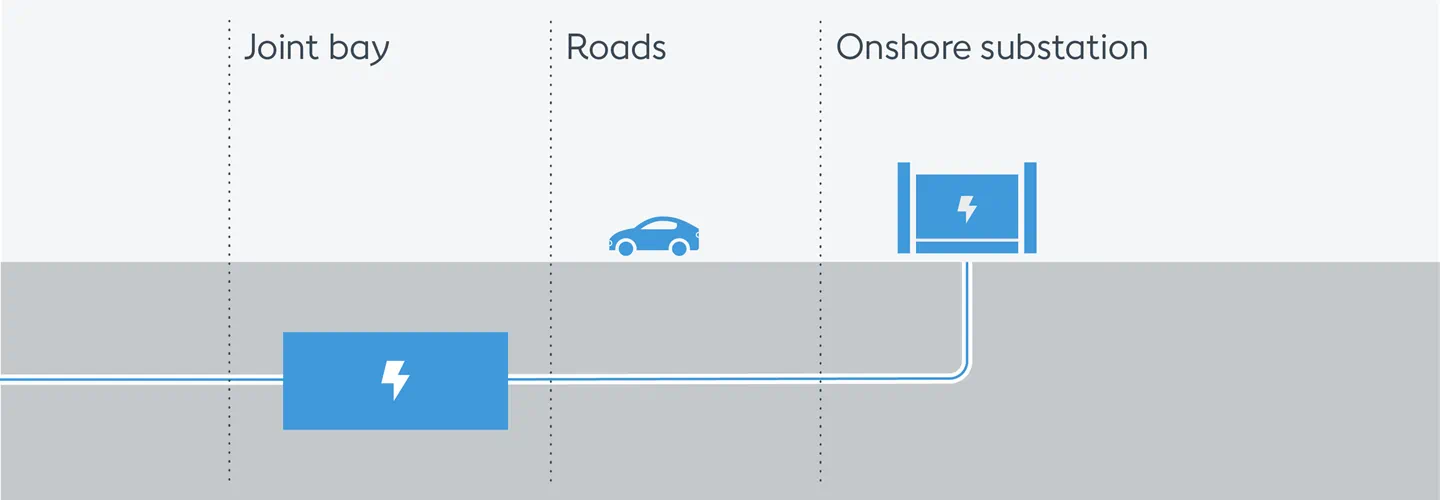The term landfall refers to the point at which the cables carrying power from an offshore wind farm reach the shore. This is where the offshore and onshore infrastructure is connected – an important step in bringing renewable wind energy into the power grid.
To make the cable sea-to-shore connection, we use horizontal directional drilling (HDD) to lay the export cable under the seabed and beach area. HDD can extend anywhere from 300 meters to approximately 1.000 meters out at sea.



